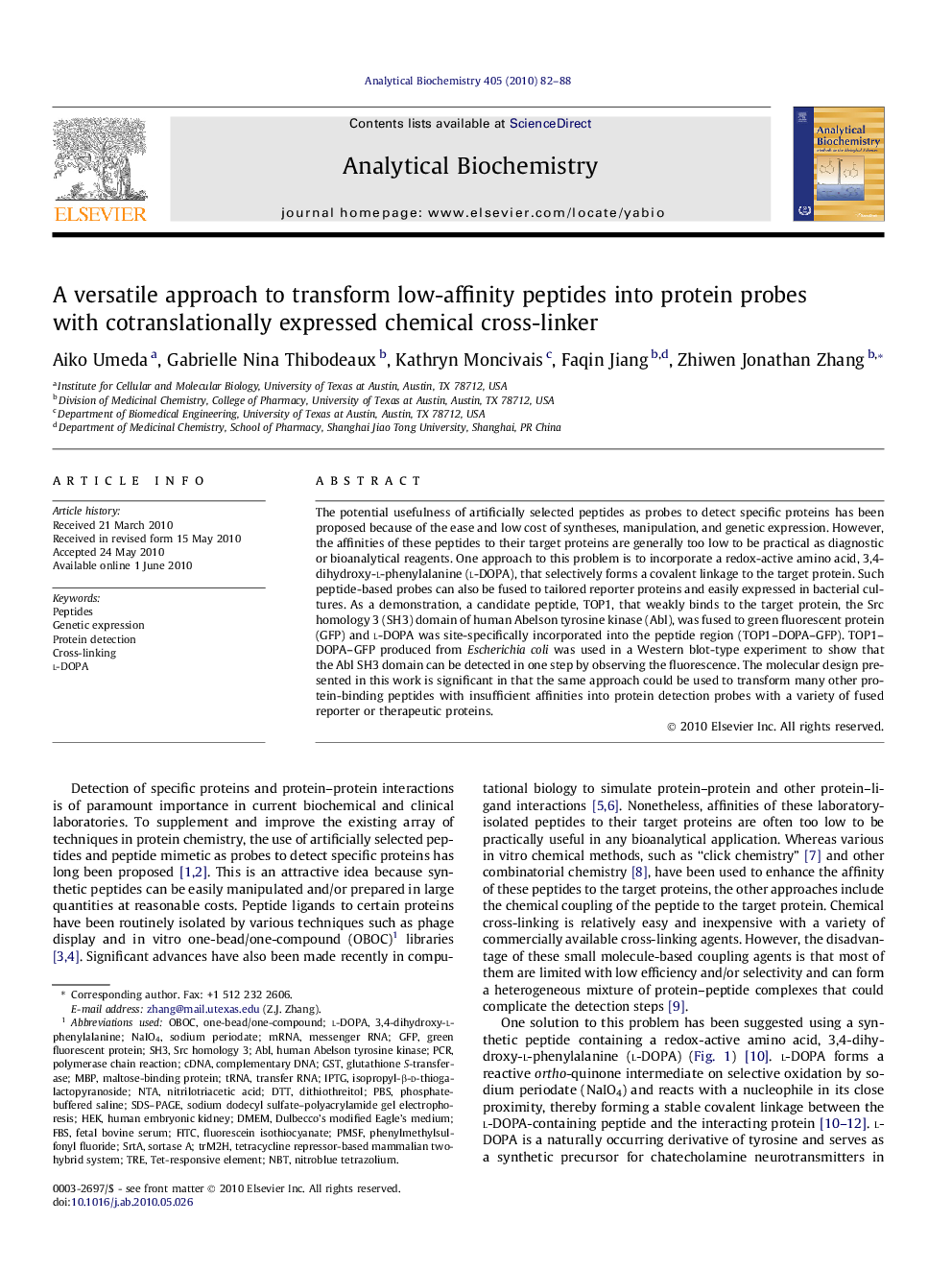| کد مقاله | کد نشریه | سال انتشار | مقاله انگلیسی | نسخه تمام متن |
|---|---|---|---|---|
| 1173909 | 961710 | 2010 | 7 صفحه PDF | دانلود رایگان |

The potential usefulness of artificially selected peptides as probes to detect specific proteins has been proposed because of the ease and low cost of syntheses, manipulation, and genetic expression. However, the affinities of these peptides to their target proteins are generally too low to be practical as diagnostic or bioanalytical reagents. One approach to this problem is to incorporate a redox-active amino acid, 3,4-dihydroxy-l-phenylalanine (l-DOPA), that selectively forms a covalent linkage to the target protein. Such peptide-based probes can also be fused to tailored reporter proteins and easily expressed in bacterial cultures. As a demonstration, a candidate peptide, TOP1, that weakly binds to the target protein, the Src homology 3 (SH3) domain of human Abelson tyrosine kinase (Abl), was fused to green fluorescent protein (GFP) and l-DOPA was site-specifically incorporated into the peptide region (TOP1–DOPA–GFP). TOP1–DOPA–GFP produced from Escherichia coli was used in a Western blot-type experiment to show that the Abl SH3 domain can be detected in one step by observing the fluorescence. The molecular design presented in this work is significant in that the same approach could be used to transform many other protein-binding peptides with insufficient affinities into protein detection probes with a variety of fused reporter or therapeutic proteins.
Journal: Analytical Biochemistry - Volume 405, Issue 1, 1 October 2010, Pages 82–88